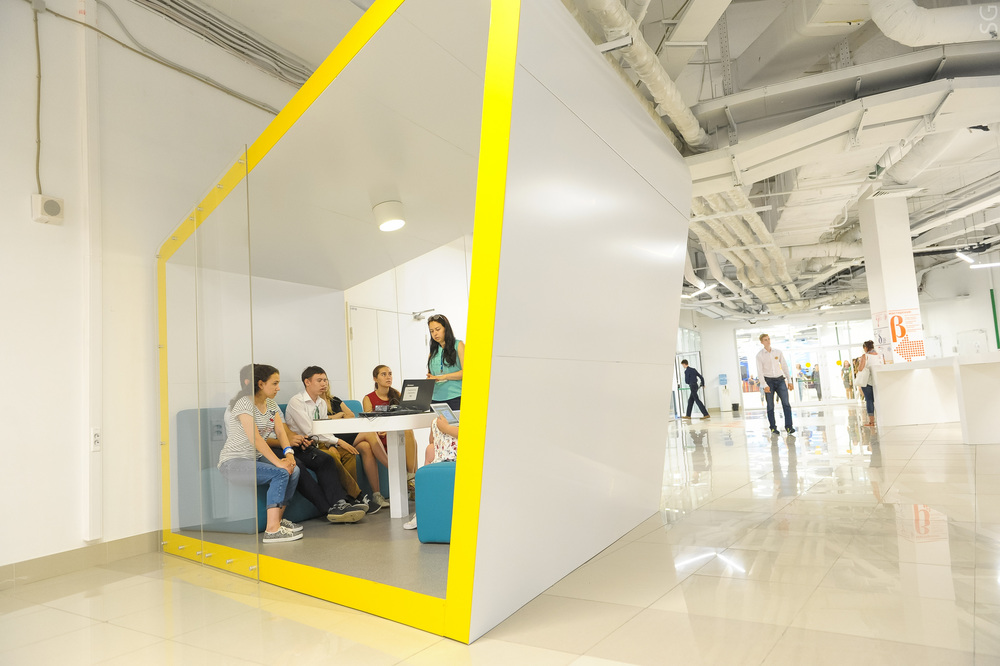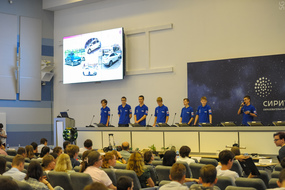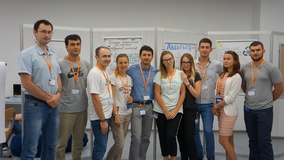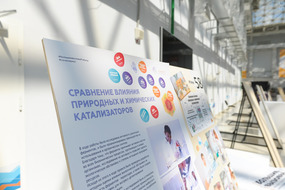The “Green” Concrete Technology project has named the winner of the “New Materials” category at the “Sirius” educational center in Sochi. The winning team of high school students developed an energy-efficient method of producing high-quality concrete from waste metallurgy for civil and road construction. This is the second time that NUST MISIS together with Russia`s leading metallurgical companies has organized the “New Materials” category as part of the “Big Challenges” educational shift.
Developed by a team of school students and led by several young scientists from NUST MISIS (Yaroslava Kumanova, Alexander Komissarov, Dmitry Suvorov and Bekzod Khaydarov) the winning technology is designed to create energy-efficiency (green) technologies for processing metallurgical waste. This energy-efficiency method of waste metallurgy processing makes it possible to obtain innovative binders used in civil and road construction.
“The developers used granulated blast furnace slag and chemical activator as a raw material, which allowed them to obtain a material that is not inferior in physical & mechanical properties to commercially available analogues (like Portland cement brand M-500-M-700). At the same time, the cost of the obtained material is 3 times cheaper”, said Yaroslava Kuminova, one of the project heads and a researcher at the Laboratory for the Separation & Concentration in Chemical Diagnostics of Functional Materials & Environmental Objects.
The constant growth of volumes and rates of construction in Russia and in the world proves the demand of this kind of materials. Low cost, increased performance characteristics and solution of environmental problems for the disposal of large-scale industrial waste have become the key features of the new “green” concrete.
“The close cooperation of NUST MISIS with ‘Sirius’, Russia`s leading educational center, is aimed at working with the most promising students. The professional navigation program developed at the University allows the best students to participate in breakthrough research and developments. A striking example of this work is NUST MISIS`s participation in the ‘Big Challenges’ project. As part of the ‘New Materials’ category, high school students work to create unique industrial technologies and modern materials under the guidance of our University`s leading scientists”, said Alevtina Chernikova, Rector of NUST MISIS.
28 school students from 17 Russian regions participated in “New Materials-2018”. For three weeks, they worked to develop an electric energy storage device (a key element of future energy), a technology to recycle technogenic waste of mineral raw materials, and hydrophobic filters for collecting oil products from the water surface.
According to Anastasiya Terekhova, head of the Laboratory of Energy-Efficient & Resource-Saving Industrial Technologies, “this year, the NUST MISIS team has demonstrated a high level of organization. I would like to note the successful “synchronization” of children and mentors, and the beneficial effect of sharing skills with laboratory equipment and fundamental knowledge about the process of working on projects. The “New Materials” shift allows the University to attract talented students, and for example, Alexander Melnikov, a graduate of “New Materials-2017”, is enrolling in NUST MISIS`s Metallurgy studies this year.
In May 2018, Alyona Nikiforova, a Moscow school student and a graduate of the “New Materials” shift, presented her research development at the Intel International Science and Engineering Fair held in Pittsburg, USA. Recently, as part of a research group, she has received a patent for this invention.
400 students from the “Big Challenges” program have been selected on the basis of the All-Russian Competition of Scientific & Technological Projects, which attracted over 41,000 students between 8-10th grade. “Big Challenges-2018” witnessed 80 scientific projects in 12 interdisciplinary areas.






